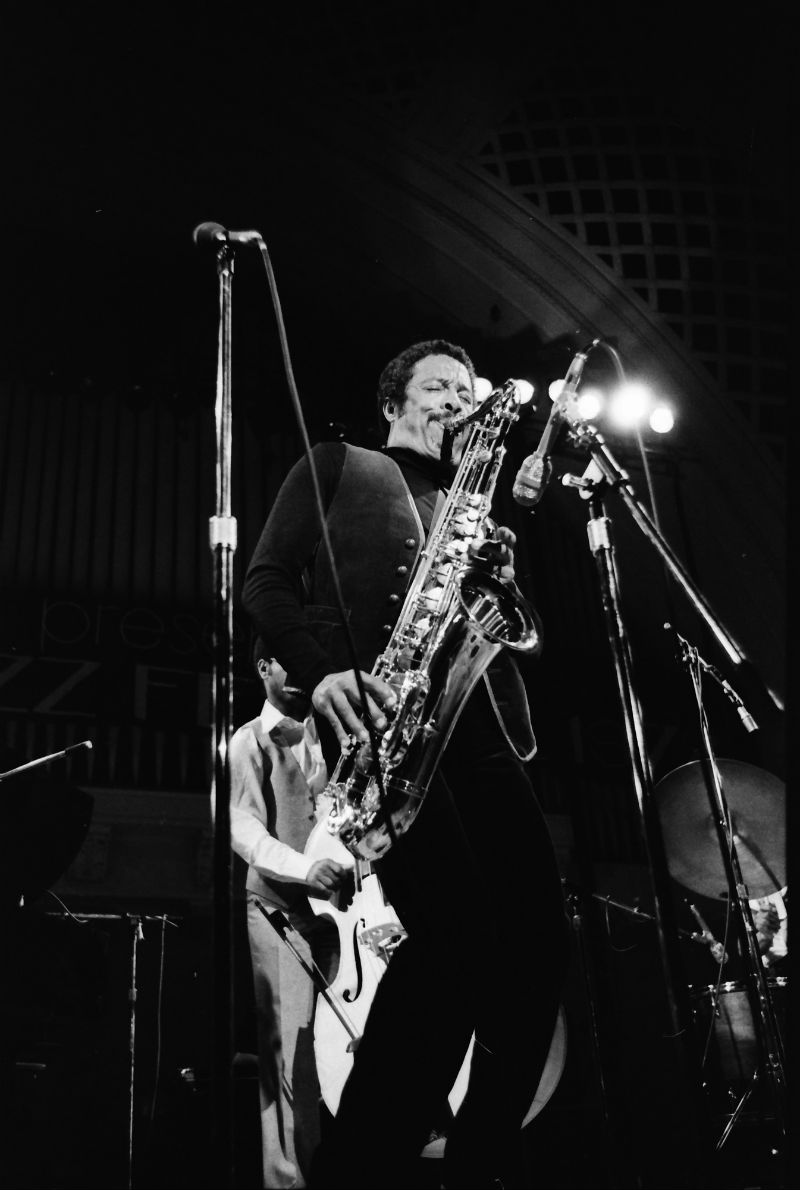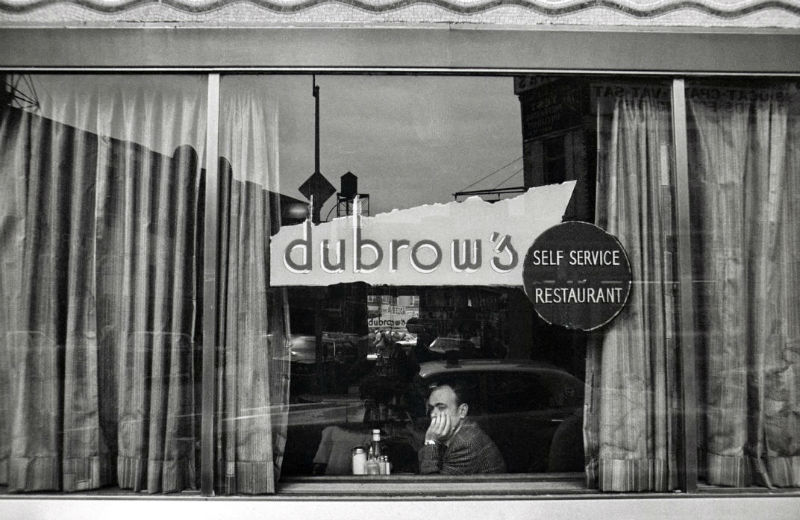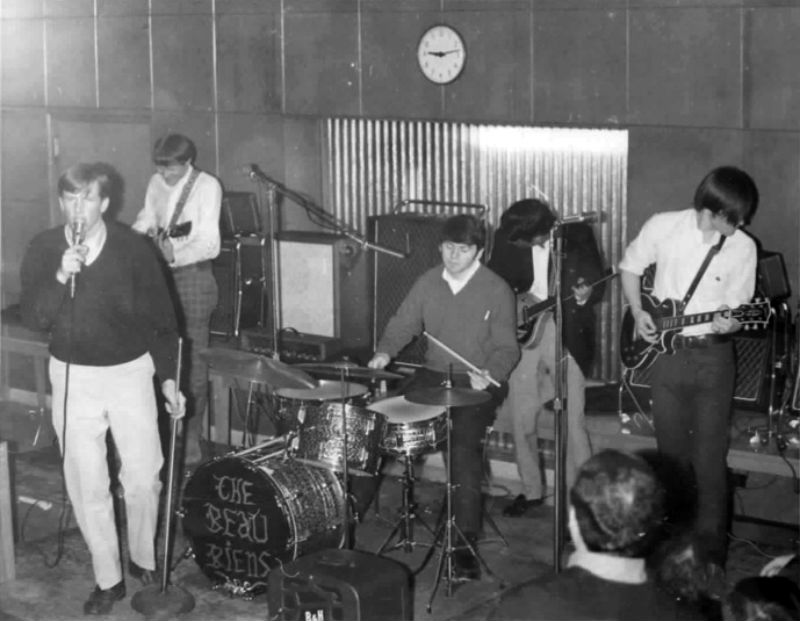U-M Men's Glee Club-commissioned "Seven Last Words of the Unarmed" has renewed urgency

The names have changed, but the song remains the same.
Nearly five years ago the Men's Glee Club at the University of Michigan debuted a performance of "Seven Last Words of the Unarmed" by Atlanta-based composer Joel Thompson, written to honor seven people killed at the hands of the police: Michael Brown, Trayvon Martin, Oscar Grant, Eric Garner, Kenneth Chamberlain, Amadou Diallo, and John Crawford.
But with the deaths of George Floyd, Ahmaud Arbery, and Breonna Taylor as recent reminders of police brutality, "Seven Last Words of the Unarmed" has renewed urgency.
Dr. Eugene Rogers, who commissioned the work when he was director of the Men's Glee Club, has been working on compiling educational resources that complement the composition's focus, and now that material is available at sevenlastwords.org.
The Great Michigan Online Art Fair looks to help creators "uncancel" their livelihoods

Brian Walline's work is instantly recognizable. The Ann Arbor artist creates Michigan scenes in the style of vintage travel posters, using bright colors and bold typography to convey a deep love for his home state.
While Walline takes freelance commissions -- he did the art for AADL's 2019 Summer Game -- a significant part of his income is derived from tabling at art shows across Michigan. But most of the major art shows for the summer have been canceled, and since they all take a while to organize, it's unlikely any will attempt to reopen even in a modified fashion that's in line with the current phase 4 guidelines for the way businesses can operate.
With his fellow artists in mind, Walline took it upon himself to create The Great Michigan Online Art Fair as a virtual way for creators to display their wares in a playful, interactive environment.
"We are trying to uncancel our livelihoods," Walline writes on the art fair's website.
Artists and vendors can apply to be a part of The Great Michigan Online Art Fair through 11:59 p.m. EST on Sunday, June 7. The site will host 31 artists and 16 vendors between June 15 and July 13, and the art fair is also accepting sponsorships.
We emailed with Walline about his creation of The Great Michigan Online Art Fair:
New Washtenaw music in the time of quarantine: Volume 8

Volume one is here.
Volume two is here.
Volume three is here.
Volume four is here.
Volume five is here.
Volume six is here.
Volume seven here.
Volume eight is below and features music/mixes from Dr. Pete Larson and his Cytotoxic Nyatiti Band, Mike List, JTC (Tadd Mullinex), Mike C, Gray Scot (Child Sleep), MEMCO members, Hannah Baiardi, Little Traps, Kirsten Carey, King Micah the Infamous, Charles Trees, Sean Curtis Patrick, and Mark Lansing and His Strange Brotherhood.
WCBN station ID promos by Sun Ra, Dexter Gordon, Dewey Redman, and other jazz greats surface online

The best thing about WCBN is the music, obvs. Nearly every time I tune into 88.3 FM, I hear something that catches my ear, or is new to me and makes me want to dig deeper, or reminds me of a band I forgot about.
The second best thing about WCBN is the vintage station ID promos. (Sorry, sports-talk guys. I'm sure your show is fab.)
Some of the clips feature the DJs doing skit-like or audio collage promos, but many are voiced by a multitude of musicians, both famous and not-so, telling you that when they're in Ann Arbor, they listen to WCBN.
But as far as I know, the only place to hear these small gems is to listen to the station -- until now.
Patrick Shawl uploaded eight WCBN station ID promos to Soundcloud featuring some major jazz artists: Sun Ra, Dewey Redman, Dexter Gordon, Johnny Griffin, Jimmy Heath, Percy Heath, George Cables, and Stanley Cowell. None of these clips are wacky, or even in the upper echelon of some of the WCBN promos I've heard, but they sent me down a rabbit hole in an attempt to ID the IDs.
There's no notation of the years these were recorded, or at what shows, but some sleuthing turned up clues and it seems like many of them were taped at the 1978 Ann Arbor Jazz Festival, which Sun Ra and His Solar Arkestra played on September 23:
Third Place Living: Marcia Bricker Halperin's photo exhibit "NYC's Vanished Cafeterias: 1975-1985"

The first thing that jumps to mind when I think about New York City cafeterias is Edward Hopper's 1942 painting Nighthawks. In addition to its masterful capturing of manmade lights and nighttime shadows, many interpret the painting as a portrait of big-city loneliness. "The four anonymous and uncommunicative night owls seem as separate and remote from the viewer as they are from one another," states the proprietor of the fansite edwardhopper.net. But to me, it looks like the counter clerk is speaking with the couple, who may have had a great night out on the town based on the way they're smartly dressed, leaving the man with his back to viewers as the lone lonely one -- though the painter referred to him as "dark sinister" in his notes for the painting, not lonely.
These sorts of varied interpretations about what people are doing in eateries went through my mind as I viewed photographer Marcia Bricker Halperin's NYC's Vanished Cafeterias: 1975-1985 exhibition.
Halperin's work was on display at the University of Michigan's Lane Hall Gallery when COVID-19 closed down everything. Organized by The Institute for Research on Women and Gender, the Women’s Studies Department, the Jean and Samuel Frankel Center for Judaic Studies, and the Department of American Culture, it was originally scheduled to run January 16 to July 31, but the exhibit has moved online. The 17 black-and-white photos in the physical exhibit are interspersed with shots of the gallery setting and text panels for the online version,
While the name NYC's Vanished Cafeterias indicates Halperin went all over the city to photograph, the Brooklyn native shot at two locations, both part of the small, family-run Dubrow's chain. (She has also shot eateries in other places, such as Miami's Concord Cafeteria, not associated with Dubrow's.) As the Institute for Research on Women and Gender website states:
"Artist Spotlight: Tadd Mullinix" highlights the many personas and productions of one of Ann Arbor's most prolific musicians
Musician and artist Tadd Mullinix was scheduled to DJ at a party for the 2020 Ann Arbor Film Festival (A2FF). But when A2FF went virtual because of the COVID-19 pandemic, Mullinex took his set online with the rest of the fest. Now the A2 Film Fest has teamed up with Michigan Electronic Music Collective (MEMCO) member Jordan Stanton to release a short documentary on the multifaceted Mullinex, who records all sorts of electronic music -- from techno to avant-garde to drum 'n' bass to hip-hop -- under numerous pseudonyms (Dabrye, JTC, Charles Manier, James T. Cotton, X-Altera, etc.).
Stanton released his Impulse Ann Arbor documentary last November, which gave a 22-minute overview of Tree Town's techno history. Artist Spotlight: Tadd Mullinex is similarly brief, but the 8 minutes are enough to give a taste of Mullinex's background and music, which you should immediately listen to after you've watched this film. Start with any releases on his own Bopside label or the numerous records he's made with longtime partners Ghostly.
Glaciers & Glacial Paces: Sean Curtis Patrick's atmospheric photography & ambient music evoke mysterious beauty

Sean Curtis Patrick is one of Ann Arbor's most multidimensional creatives.
I don't mean to limit him geographically, either; this blog is about Washtenaw-area culture, so I gotta stress Patrick's local connex, but he's really one of the most well-rounded, multidimensional artists I can think of working today, excelling in music, photography, sculpture, film, and whatever other creative pursuits to which he applies his endlessly curious mind.
Even during the COVID-19 quarantine -- where some artistic folks are struggling to do any creative works in this chaotic time -- Patrick has been musically prolific and continues to pursue his photography, pottery, and more.
"A lot has been happening, even though I'm not leaving my house much," Patrick wrote in an email. "I've grown two full beards and then shaved them off during quarantine, so I know some time has gone by."
Patrick is the media design and production lead at the University of Michigan Center for Academic Innovation, and he's made remarkable films, interactive displays, and photos of Greenland's glacial melt. Outside of his day job, Patrick pursues hobbies with the sort of obsessive focus that bespeaks a passion for experience, exploration, innovation, and just living a full and rewarding life, from climbing mountains and riding motorcycles to racing bikes and modifying technology to fulfill his artistic ideas.
During quarantine, Patrick has been releasing a series of EPs and singles that explore ambient music realms, but they feel like extensions of his overall artistic aesthetic and purpose rather than mere background sounds. His is a world of visual wonder, aural invocations, and a desire to live not just as a bystander but as one who dives in and explores our universe and shares those discoveries with anyone who's open to experience all the grandeur, sadness, beauty, and wonder of our Earth, existence, and beyond.
I asked Partick about his creative process during quarantine and how his various artistic pursuits inform one another.
Times Past: Catching up with 1960s Ann Arbor psych-rockers The Beau Biens

This story was originally published on April 4, 2017.
The Beau Biens would have been entirely forgotten were it not for the single record they released: the "Times Passed / A Man Who's Lost" 7-inch, released in March 1967. While this Ann Arbor-based group didn't last long, and the single wasn't particularly popular at the time, over the past 50 years the record's status as a lost psychedelic classic has grown and grown.
"The Beau Biens 45 is considered one of the best garage band singles of the '60s," said Frank Uhle, media consultant for University of Michigan's Instructional Support Services by day, Ann Arbor rock encyclopedia by night. "A couple of years ago a book was published that listed just about every American DIY record that came out then, and a panel of experts voted 'Times Passed' number 427 of the more than 8,000 records included."
Though it's been bootlegged on several garage-rock compilations, the original 45 is nearly impossible to find. That's one reason why Uhle has reissued the record; another is because he located Joe Doll, the man who had the original master tapes because he was the one who recorded it at WCBN-FM during an all-nighter. Even the first pressing of "Times Passed / A Man Who's Lost" was pressed from a second-generation copy of the tape, so this new edition is even better than the real thing. The quintet consisted of Tom Kleene (vocals), Don Tapert (lead guitar), Tom Hartkop (rhythm guitar), Jim Masouras (bass), and Rick Fine (drums).
Originally a folk group, the Milk River Jug Band, the group's sound got turned on its ear when Tapert witnessed a Rolling Stones concert and only wanted to rock. After some resistance from his bandmates, the group changed its name to The Beau Biens and the train started rolling. The ensembles sound evokes a garage-ier version of The Yardbirds, powered by a fuzzed out Vox amp stomp.
We talked to Tapert about The Beau Biens' beginnings, seeing the Stones, Yardbirds, and The Velvet Underground and Nico, and Ann Arbor in '60s. We also tapped Uhle's bottomless well of local-music knowledge about the '60s Michigan rock scene and how the reissue came about.
Theaters in the Absurd: Washtenaw-area drama troupes announce cancellations, postponements, and out-of-business news due to the covid-19 pandemic

On March 12, Kickshaw Theatre announced on its Facebook page that it had to cut short its then-current production of Lungs, and because the show didn't have a full run, it seemed reasonable to wonder if the play might be rescheduled.
But on May 1, the cancellation became permanent: Kickshaw Theatre sent out a note that said the organization was closing permanently after five seasons. It also canceled the final scheduled event for the current season, Madeleine George's The (curious case of the) Watson Intelligence, which was to run July 9-26.
With the sad news of Kickshaw's demise in mind, we decided to check the updates of other theater groups in Washtenaw County to see how they were doing.
New Washtenaw music in the time of quarantine: Volume 7

Another round of new releases from Washtenaw County musicians in the age of quarantine. (Visit our mini-guide on livestreams by local artists here.)
Volume one is here.
Volume two is here.
Volume three is here.
Volume four is here.
Volume five is here.
Volume six is here.
Volume seven is below and features music/mixes from Benjamin Green, Matthew Dear, Idle Ray (Fred Thomas), Dagoretti Records, XV, Shigeto, Josef Deas, Todd Osborn, Charles Trees, The Fearless Flyers, The Kelseys, Chirp, Jib Kidder, Virago, MEMCO, Lily Talmers, and Chris Dupont.


































